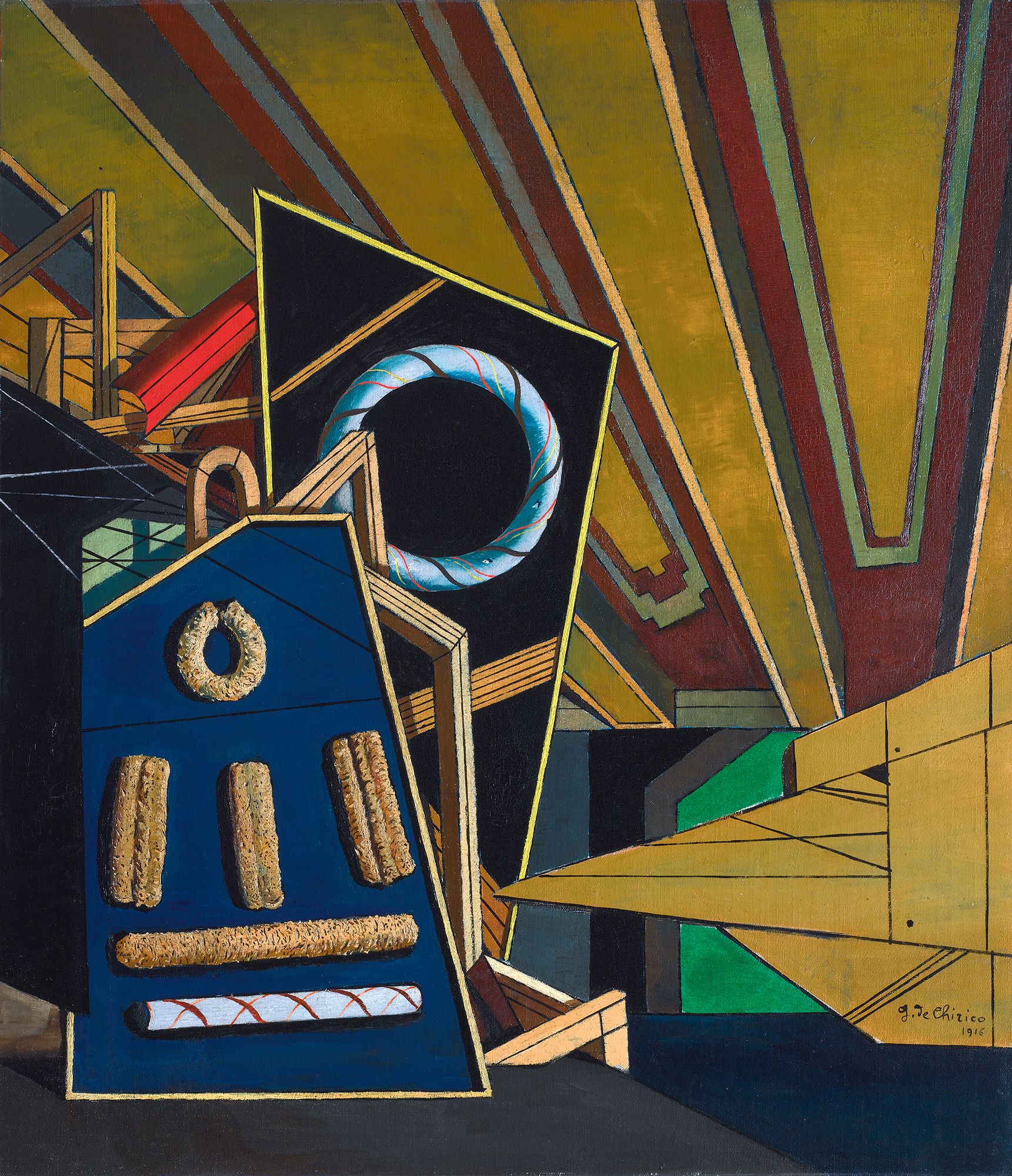
The Revolt of the Sage
De Chirico subscribed to Schopenhauer’s notion that losing one’s memory is akin to madness, since it is no longer possible to make sense of the world. His works evoke this state of disorientation by juxtaposing objects that seem to have no logical relationships with one another. Considered in this light, The Revolt of the Sage may be the symbolic depiction of a philosopher’s descent into insanity, no longer being able to connect the thoughts in his mind (represented here as an assortment of objects cluttering a steeply pitched attic or lumber room). The iconography of this particular work was partly based on shop window displays seen by the artist in Ferrara during World War One, which contained “sweets and biscuits with remarkably metaphysical and strange shapes”. Estorick purchased the work in 1954 from Roland Penrose, the influential collector, artist and associate of the Surrealists.
1916
Oil on canvas
67.8 x 59.3 cm
6




![Trovatore I [Troubadour I]](https://img.smartify.org/W5AVFtq6wbu6NqTJWywV2ly3eR4iOceIkk-Ve-3MCDE/resize:fill-down:535:535:0:0/gravity:fp:0.5:0.5/format:jpg/czM6Ly9zbWFydGlmeS1tZWRpYS9ha19SeWpRVmxjWE5WNkZhaXBCYm8wci9OT2JCcXF1RDFZT2JxZjZWOVV2TC5qcGc.jpg?Policy=eyJTdGF0ZW1lbnQiOiBbeyJSZXNvdXJjZSI6Imh0dHBzOi8vaW1nLnNtYXJ0aWZ5Lm9yZy9XNUFWRnRxNndidTZOcVRKV3l3VjJseTNlUjRpT2NlSWtrLVZlLTNNQ0RFL3Jlc2l6ZTpmaWxsLWRvd246NTM1OjUzNTowOjAvZ3Jhdml0eTpmcDowLjU6MC41L2Zvcm1hdDpqcGcvY3pNNkx5OXpiV0Z5ZEdsbWVTMXRaV1JwWVM5aGExOVNlV3BSVm14aldFNVdOa1poYVhCQ1ltOHdjaTlPVDJKQ2NYRjFSREZaVDJKeFpqWldPVlYyVEM1cWNHYy5qcGciLCJDb25kaXRpb24iOnsiRGF0ZUxlc3NUaGFuIjp7IkFXUzpFcG9jaFRpbWUiOjE3NTM0MDE2MDB9LCJEYXRlR3JlYXRlclRoYW4iOnsiQVdTOkVwb2NoVGltZSI6MTc1MjEwNTYwMH19fV19&Signature=Ejys4CXHdPpas1EIFnDhq6BSRSzKe4t7dvG7j3gxdGUI4QiPJdhGJcrQvgqpj8elYI7ilFexSFhj-KuoIU8vFpMMFsycao02PrScxYRK1ePKTxt-ijp4tGu2PMN3VqqQFTQBAtpifF2d2K~rspzRlBMD5YqlV7tmUecJRbTHQRQBHBK7BnnTjqPkzlOH1CeQOlWkOctBhx53Qs7uFKhovJ~Oey8SWeuTNIrDLX54EpoYaPr6LLzpE9uzDi1cHENIi-1KcFwFYuwTEwxSUG9U0U1-p6ckdlV4Qh6oOFSeNfxPp4Q78E~FbCcSBFuPBfIjMB0EN0OODwabtiaOND4xFA__&Key-Pair-Id=K2TK72C9H46KK2)
